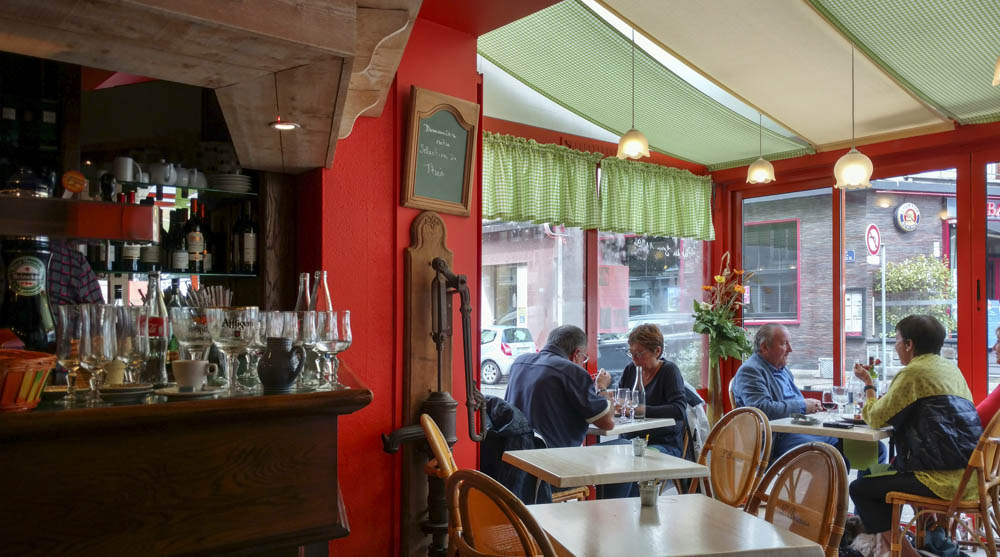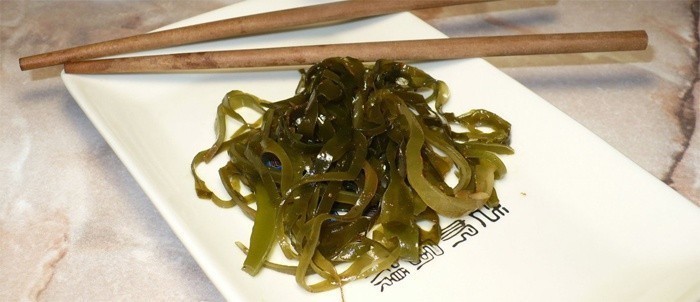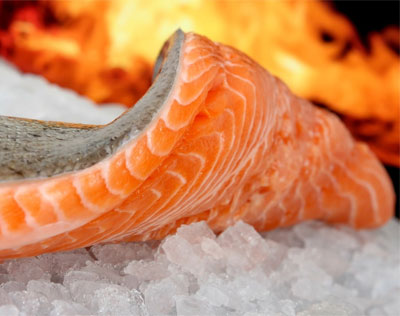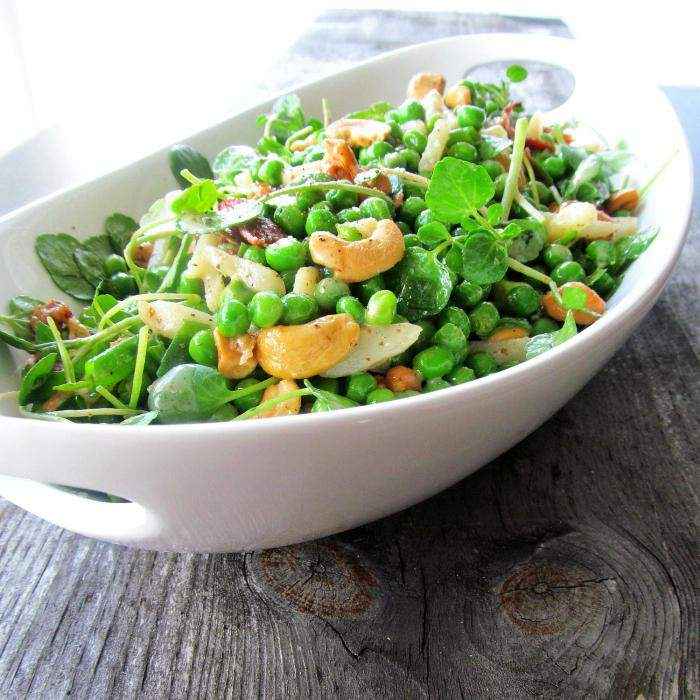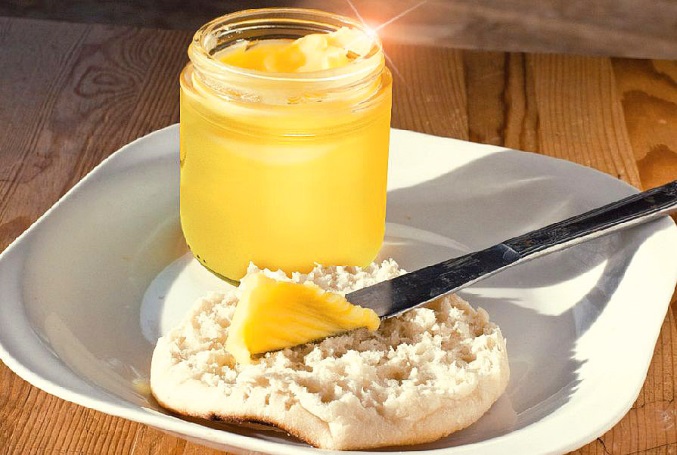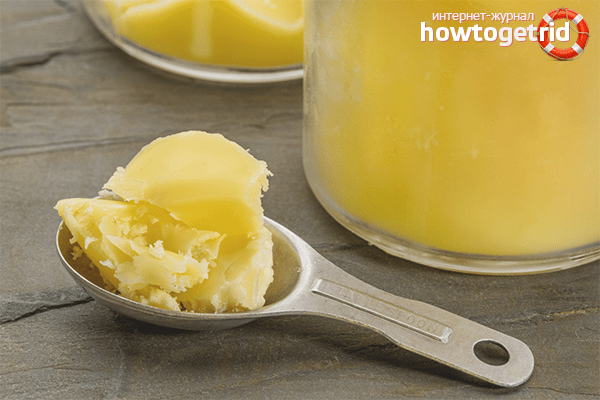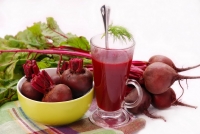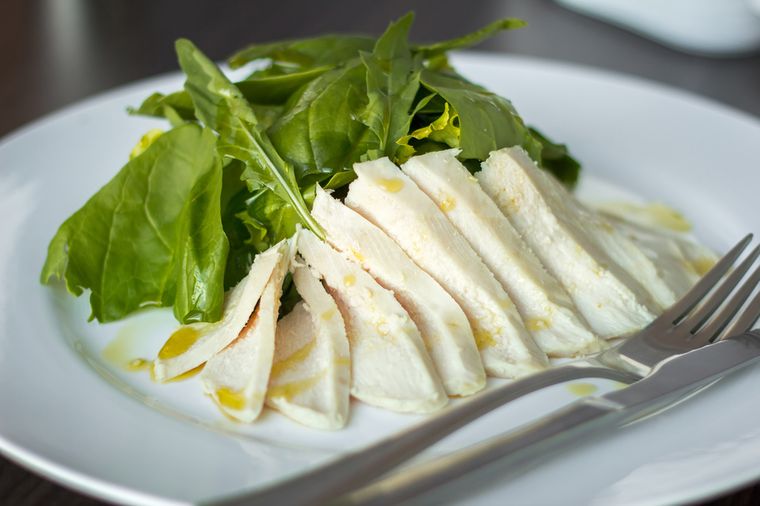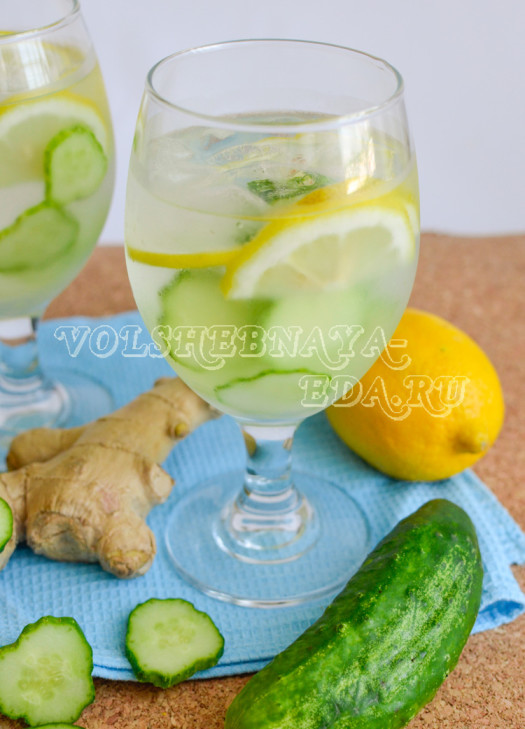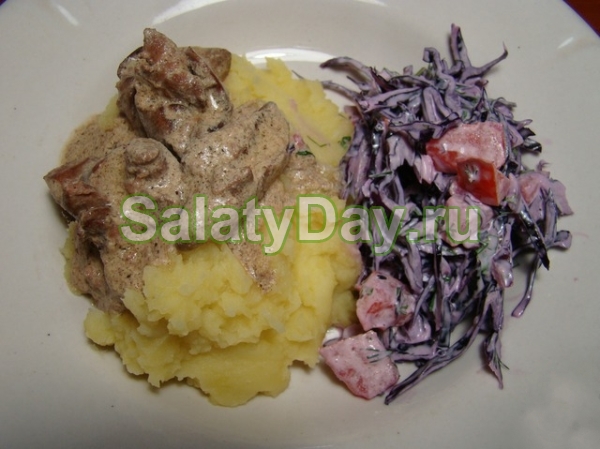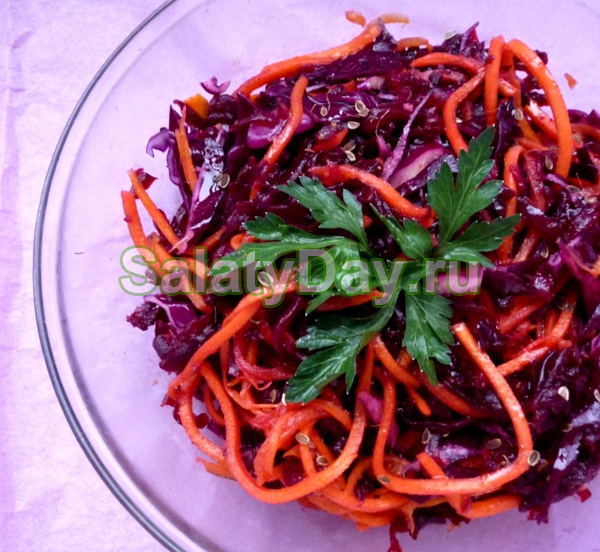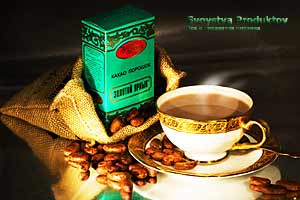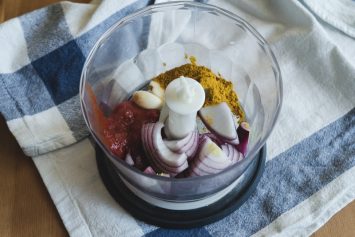What to try in France: traditional cuisine and food. What to eat in France
Admit, we always want to know a little more than we have the opportunity. To see at least out of the corner of your eye how they live in the neighborhood or in other countries, what they eat for breakfast, lunch or dinner. For example, the French? Not the frog legs they eat, indeed! How do the most ordinary Frenchmen make up their everyday menu? I managed to stay in three completely different French families with a different way of life and pace of life, different habits and income levels. So, France, nowadays, three families and French cuisine as it is.
Summer in a french village
Guillaume and Olivier live outside the city 50 kilometers from Paris in a large two-story mansion. They have their own farm, and the office is in a separate building near the house, so they don’t need what’s torn between the house and work. Their three children, Charles, Laurence, and Mathieu (7, 5, and 3 years old), are supervised by the nanny when their parents are at work.
 Guillaume is a very caring mother and monitors the nutrition of her family very carefully. Every evening in a special notebook she paints a menu the next day. Oddly enough, but to have a full breakfast, as most nutritionists advise, they have not accepted. Guillamet does not eat breakfast at all, Olivier drinks a cup of coffee, children eat cornflakes with milk or yogurt.
Guillaume is a very caring mother and monitors the nutrition of her family very carefully. Every evening in a special notebook she paints a menu the next day. Oddly enough, but to have a full breakfast, as most nutritionists advise, they have not accepted. Guillamet does not eat breakfast at all, Olivier drinks a cup of coffee, children eat cornflakes with milk or yogurt.
It is customary to sit down to have dinner at home at exactly 13.00. Guillaume is even angry if her husband lingers at work. Lunch begins with a salad - just lettuce seasoned with balsamic or wine vinegar and olive oil. After necessarily meat or a fish dishfor example, beef medallions in sun-dried tomato sauce, fish fillet, baked with a slice of lemon and herbs. Garnished with steamed vegetables: potatoes or cauliflower.
Frenchmen don’t eat soups for lunch, and for dinner this is an infrequent dish, although the word "dinner" in French sounds like le souper. Only once during the several weeks of my stay in this family was for dinner. Everything is simple: zucchini, broccoli and mushrooms are fried separately in olive oil, then crushed in a blender. Fat cream is added to this mixture, salt, pepper and slightly warmed before serving.
Complete lunch or dinner with cheeses.. A plateau is served with different types of cheeses (5-7 grades), which can be combined with pieces of French crispy baguette. This is unrealistically delicious! And only after this cheese "ritual", it can be considered that lunch or dinner is over.
Despite having three children, the family is cool about sweets. For dessert, they eat fruit or the easiest homemade pies to make.
By the way peaches in this family decided to eat ... with a knife and a fork !!! In this case, first you need to peel the peach (again with a knife and fork), and only then, cutting off a piece, enjoy the fruit. Experiment somehow in the kitchen secretly so that your loved ones do not accuse you of being too aristocratic, to taste a peach with a knife and fork. And, if you still have enough patience, believe me, the peach will seem to taste completely different. Fortunately for me, the five-year-old Laurence, by virtue of her age, was also not a specialist in figured peach slicing.
Provincial charm with an Italian accent

The leisurely pace of life affects the format of lunches and dinners. They eat slowly, as if it was not just food, but something more - a ceremony or even an old tradition. Lunch begins with a snack. Most often it is traditional lettuce with olive oil and balsamic or wine vinegar dressing. By the way, Joel’s salad brings to dinner straight from his small garden where strawberries, tomatoes, onions, basil and ... potatoes also grow. Yes, yes, the elderly French are also very fond of all sorts of summer cottages, but, of course, not on such a scale as our pensioners.
One day we were surprised parma ham and melon appetizer. Ripe melon, preferably chilled, is peeled and cut along large segments along. The ham is cut very thinly, almost transparent slices and laid out on a plate, put a slice of melon on top. It is believed that this dish was born in Italy, but, in my opinion, very organically fit into a French-style dinner.
To the main course portions of a rabbit are fried in a mixture of butter and olive oil to a golden crust. Add chopped onion and fry it until transparent. After the rabbit meat, sprinkle with flour and pour chicken broth. Add garlic, a glass of white wine, a mixture of peppers, a handful of raisins and a sprig of rosemary. Stew under the lid for about an hour. Separately, mix the yolks with cream, add a couple of tablespoons of the cooled juice from the container where the rabbit was stewed, and pour the sauce over this dish. The rabbit garnished with asparagus beans, slightly stewed in a saucepan with butter and garlic.

Unlike the previous family with three children, the venerable Anna and Joel were those still sweet tooth. Every day we feasted on different goodies. One of them is a simple French dessert with cherries. The dough is made from a mixture of milk, flour, eggs and sugar. Pitted cherries are poured with this mixture, and after 20 minutes the most delicate dessert is ready. Be sure to get a couple of cherries on a branch with a leaf. And after you get the klafuti from the oven, decorate them with dessert. It is very elegant. Almost a work of art. An important detail: it is better to use cherries or red cherries so that when baking, the juice of the berries does not stain the dough so much.
Crazy Crazy Capital Life
The daughter of Anna and Joel - Marie -he has long been living in Paris. She works as a teacher of French language and literature in one of the colleges of the capital. He rents a studio apartment with his fiance Francois in the Marais - one of the old districts of the city.
For breakfast, she treats me to cereal with milk and toast with confiture, moreover, jars of confiture for every taste: apricot, strawberry, blueberry. A magical taste overlooking a quiet French street and neighboring balconies with bright geraniums. But Marie admits that such measured breakfasts are only on weekends, when there is no need to rush to work. Often, the breakfast of a resident of this French metropolis consists of a cup of coffee.
Important detail
All these French lunches and dinners could not do without a glass of wine. On an intuitive level, French people can choose red or white for a dish in such a way that sometimes it seems: your lunch or dinner is not just a set of dishes, but a well-thought out plan. A plan to conquer your taste buds.
Admit, we always want to know a little more than we have the opportunity. To see at least out of the corner of your eye how they live in the neighborhood or in other countries, what they eat for breakfast, lunch or dinner. For example, the French? Not the frog legs they eat, indeed! How do the most ordinary Frenchmen make up their everyday menu? I managed to stay in three completely different French families with a different way of life and pace of life, different habits and income levels. So, France, nowadays, three families and French cuisine as it is.
Summer in a french village
Guillaume and Olivier live outside the city 50 kilometers from Paris in a large two-story mansion. They have their own farm, and the office is in a separate building near the house, so they don’t need what’s torn between the house and work. Their three children, Charles, Laurence, and Mathieu (7, 5, and 3 years old), are supervised by the nanny when their parents are at work.
 Guillaume is a very caring mother and monitors the nutrition of her family very carefully. Every evening in a special notebook she paints a menu the next day. Oddly enough, but to have a full breakfast, as most nutritionists advise, they have not accepted. Guillamet does not eat breakfast at all, Olivier drinks a cup of coffee, children eat cornflakes with milk or yogurt.
Guillaume is a very caring mother and monitors the nutrition of her family very carefully. Every evening in a special notebook she paints a menu the next day. Oddly enough, but to have a full breakfast, as most nutritionists advise, they have not accepted. Guillamet does not eat breakfast at all, Olivier drinks a cup of coffee, children eat cornflakes with milk or yogurt.
It is customary to sit down to have dinner at home at exactly 13.00. Guillaume is even angry if her husband lingers at work. Lunch begins with a salad - just lettuce seasoned with balsamic or wine vinegar and olive oil. After necessarily meat or a fish dishfor example, beef medallions in sun-dried tomato sauce, fish fillet, baked with a slice of lemon and herbs. Garnished with steamed vegetables: potatoes or cauliflower.
Frenchmen don’t eat soups for lunch, and for dinner this is an infrequent dish, although the word "dinner" in French sounds like le souper. Only once during the several weeks of my stay in this family was for dinner. Everything is simple: zucchini, broccoli and mushrooms are fried separately in olive oil, then crushed in a blender. Fat cream is added to this mixture, salt, pepper and slightly warmed before serving.
Complete lunch or dinner with cheeses.. A plateau is served with different types of cheeses (5-7 grades), which can be combined with pieces of French crispy baguette. This is unrealistically delicious! And only after this cheese "ritual", it can be considered that lunch or dinner is over.
Despite having three children, the family is cool about sweets. For dessert, they eat fruit or the easiest homemade pies to make.
By the way peaches in this family decided to eat ... with a knife and a fork !!! In this case, first you need to peel the peach (again with a knife and fork), and only then, cutting off a piece, enjoy the fruit. Experiment somehow in the kitchen secretly so that your loved ones do not accuse you of being too aristocratic, to taste a peach with a knife and fork. And, if you still have enough patience, believe me, the peach will seem to taste completely different. Fortunately for me, the five-year-old Laurence, by virtue of her age, was also not a specialist in figured peach slicing.
Provincial charm with an Italian accent

The leisurely pace of life affects the format of lunches and dinners. They eat slowly, as if it was not just food, but something more - a ceremony or even an old tradition. Lunch begins with a snack. Most often it is traditional lettuce with olive oil and balsamic or wine vinegar dressing. By the way, Joel’s salad brings to dinner straight from his small garden where strawberries, tomatoes, onions, basil and ... potatoes also grow. Yes, yes, the elderly French are also very fond of all sorts of summer cottages, but, of course, not on such a scale as our pensioners.
One day we were surprised parma ham and melon appetizer. Ripe melon, preferably chilled, is peeled and cut along large segments along. The ham is cut very thinly, almost transparent slices and laid out on a plate, put a slice of melon on top. It is believed that this dish was born in Italy, but, in my opinion, very organically fit into a French-style dinner.
To the main course portions of a rabbit are fried in a mixture of butter and olive oil to a golden crust. Add chopped onion and fry it until transparent. After the rabbit meat, sprinkle with flour and pour chicken broth. Add garlic, a glass of white wine, a mixture of peppers, a handful of raisins and a sprig of rosemary. Stew under the lid for about an hour. Separately, mix the yolks with cream, add a couple of tablespoons of the cooled juice from the container where the rabbit was stewed, and pour the sauce over this dish. The rabbit garnished with asparagus beans, slightly stewed in a saucepan with butter and garlic.

Unlike the previous family with three children, the venerable Anna and Joel were those still sweet tooth. Every day we feasted on different goodies. One of them is a simple French dessert with cherries. The dough is made from a mixture of milk, flour, eggs and sugar. Pitted cherries are poured with this mixture, and after 20 minutes the most delicate dessert is ready. Be sure to get a couple of cherries on a branch with a leaf. And after you get the klafuti from the oven, decorate them with dessert. It is very elegant. Almost a work of art. An important detail: it is better to use cherries or red cherries so that when baking, the juice of the berries does not stain the dough so much.
Crazy Crazy Capital Life
The daughter of Anna and Joel - Marie -he has long been living in Paris. She works as a teacher of French language and literature in one of the colleges of the capital. He rents a studio apartment with his fiance Francois in the Marais - one of the old districts of the city.
For breakfast, she treats me to cereal with milk and toast with confiture, moreover, jars of confiture for every taste: apricot, strawberry, blueberry. A magical taste overlooking a quiet French street and neighboring balconies with bright geraniums. But Marie admits that such measured breakfasts are only on weekends, when there is no need to rush to work. Often, the breakfast of a resident of this French metropolis consists of a cup of coffee.
Important detail
All these French lunches and dinners could not do without a glass of wine. On an intuitive level, French people can choose red or white for a dish in such a way that sometimes it seems: your lunch or dinner is not just a set of dishes, but a well-thought out plan. A plan to conquer your taste buds.
If you answer the question: “What do the French eat?”, It turns out that they eat everything. Here live meat lovers, and vegetarians, and sweet tooth, and lovers of salty.
Food is a very important part of life in France. Food is not just eaten here. Here, before serving, it is beautifully decorated, and dishes are served on the table in a certain order, and not all at once.
Although French cuisine is traditional, other countries have a great influence on it. For example, if earlier in France there were only small grocery stores, huge supermarkets have appeared in the last 20 years, where you can buy an unimaginable amount of products in one go. Previously, the French went to the bakery for bread, to the butcher for meat, and to the local market for vegetables and fruits. Now they all go to supermarkets once a week and immediately buy everything they need.
True, despite the abundance of supermarkets, for special cases, the French still rush to stores intended for the sale of goods of any one category. Many families prefer to take meat from a butcher for a family celebration, and baguette lovers will definitely visit a baker in the morning to crunch a French bun at breakfast.
Despite the fact that the French do not like to rush at the table, they usually eat breakfast quite quickly. Here at lunch and dinner they sit longer.
French breakfast
Breakfast in France is usually quite light. The French drink coffee and eat is not a choice of the following products:
- Tartinki, which are toasts with jam.
- Croissants. They are often eaten for breakfast on weekends.
- A slice of baguette with butter and jam.
- Slice of bread, fresh fruit or yogurt.
- Before breakfast, the French prefer a cup of coffee. If you order coffee in the cafe in the morning, you will be served expresso. It is served to everyone by default. If you want coffee with milk, this is what I must say. Coffee with milk is served in a huge bowl, and there will really be a lot of milk in it. Sometimes the French drink tea or hot chocolate in the morning.
French lunch
Lunch in France lasts about two hours. At this time, some go to a cafe where they eat lunch from several dishes and drink wine, others go home, and still others buy a couple of sandwiches from a street vendor.
- Lunch at the restaurant. The restaurant usually serves three to four dishes. These include salad, soup, second and dessert. Often, instead of dessert or with it, a cheese plate is served. Wine is usually ordered during lunch.
- Lunch at home. Those who eat at home eat a couple of hot dishes. Their food, of course, is simpler and less diverse than those who eat in a restaurant.
- Lunch on the street. If the work schedule does not allow you to go to a restaurant or go home, in France you can always buy sandwiches on the street at lunch time. As a rule, they consist of a baguette with cheese and ham. There you can find boiled eggs, canned tuna, salami, ham and cheese separately.
French dinner
There may be different dinners on different days of the week in France. Those who dined in the restaurant during the day usually eat little. Those who had a sandwich during lunch have a bigger meal.
In special cases, lunch can be very long. The table is covered with a beautiful tablecloth, decorated with flowers or candles. Dishes are placed in beautiful plates.
Despite the fact that there are no clearly defined dishes for different meals, in the restaurant and at home, the French eat approximately the same food. Coffee and wine are almost essential products at every meal. Tourists are always happy to taste delicious French dishes and fresh products.
France, of course, is a gastronomic country, famous for its high cuisine, and cafes and restaurants have the same symbol as the tower of Monsieur Gustave Eiffel. However, an interesting question that interests many, is how with such an abundance of sauces and desserts, the French continue to be one of the most harmonious nations in the world.
Do not forget that the dishes served in gourmet restaurants are significantly different from the products that the French consume in daily life, but there are several features of the diet that do not change for generations. My friend and I recently sat down and listing to each other who noticed something during the year of living in France. Surely you will have other observations. We proceeded from the way our friends and friends of friends eat. So let's go!
1. Food by the clock
Despite the arguments of scientists calling for fractional five meals a day, every real Frenchman traditionally eats 3 times a day. For breakfast in France, toasts or pancakes with butter and confiture are taken. Lunch is a sandwich and a small cake from the nearest bakery or a set menu in a cafe. Dinner is diverse and depends on the tastes of a particular family.
2. Cheese for dessert
French love for cheeses is not a cliche, but a feature of national thinking, which has been taught since childhood. Each child is able to determine the type of cheese by appearance and smell and tell how and with what to combine it correctly. And yet, cheese is a dessert that is customary to eat with fruits, berries or nuts after dinner or Sunday lunch, and not in the form of a sandwich for breakfast, as they like in Russia.

3. Bread and water
Baguette and a jug of water are always present on the French table. Most often this is plain tap water, which you and the restaurant will definitely bring for free along with a baguette cut into a wicker basket. By the way, the consumption of water during meals is another habit that runs counter to modern nutritional rules, according to which you should not drink during meals and immediately after it.
4. Late dinner
In most French families, an evening meal begins around 20 hours and, according to recent studies, more and more often goes to watch your favorite TV shows. However, despite such a nutritional schedule, the presence of fresh vegetables and greens in the diet helps the French stay in shape. Leaf lettuce is another must-have in every refrigerator. It is most often eaten simply with olive oil and vinegar, sometimes adding cherry tomatoes and grated wet.

5. Quality in favor of quantity
In this confrontation, quality always prevails. An early Sunday morning trip to the market, leisurely conversations with sellers, the choice of only the freshest farm products - this is a mentality that is drowned out by a trip to the nearest supermarket only in case of emergency. And no semi-finished products. The culture of semi-finished dishes is alien to the true French. But the fashion for bio-products that are grown on ecologically clean fields is becoming more widespread.
6. Coffee every day
Black coffee in France is more than a drink. Everyone drinks it, always and everywhere. In the morning, the French descend after him to the nearest cafes or bakeries, drink it during the day to cheer up, have a snack if there is no time to have a bite, and, of course, after a meal. By the way, ordering coffee after lunch or dinner is perhaps one of the basic rules of French etiquette. Moreover, the more expensive the restaurant in which you have lunch, the more rigorously this rule is observed.

7. A clear sequence of dishes
No matter how busy modern life is, serving and serving dishes are observed impeccably: a light vegetable salad with vinaigrette dressing, main course, fruits and cheeses for dessert. It is worth noting that the French never eat fruit and berries separately as a snack, only occasionally combining them with cookies during an afternoon snack. But it is rather the prerogative of children and adolescents. Adults have a cup of strong black coffee.
8. The minimum amount of time at the stove
Daily nutrition is very different from high French cuisine, where a lot of energy and attention is paid to the cooking process. In the everyday life of the average Frenchman, the time allotted to stand at the stove is limited to twenty minutes. This is due to their love of fresh, thermally unprocessed products, which they perfectly combine with meat snacks. Ham, raw smoked sausage, pastes and all kinds of cured meats occupy an important place in the diet of a real Frenchman, and fish and meat steaks are more likely the main course of the day.

9. With friends and without
The well-known French concept of "savoir vivre", the ability to live, of course, includes a culture of food. This is not just a process of absorbing food in order to saturate the body with vitamins and minerals, but also a pleasure that can be enjoyed alone on the sunlit terrace, or in the company of friends and colleagues at a large table. Another feature of the French mentality is the so-called "aperos", aperitifs to which they like to invite to their home. In this case, all kinds of chips, nuts, sliced \u200b\u200bcheeses and other snacks are put on the table.
10. Glass of wine
If you think that the idea of \u200b\u200bwine is limited to the simple rule "white for fish, red for meat", you are mistaken. The French choose wine not only for each specific dish, where even the served sauce can change the choice of a drink, but also for the event, time of day, and temperature outside the window. Every resident of France must have at least a small wine stock, his own collection, which is constantly growing along with rising incomes and the standard of living of the Frenchman.
The French are famous in the world as true gourmets. Who, no matter how they are, knows a lot about the kitchen and understands the delicate combination of products and a variety of tastes. Further in the article we will tell not only about what the French like to eat, but also give information about the food that, most likely, they would not eat.
True foodies
Food is an integral part of the life of this people, a kind of ritual, of course, food is necessary for all people, but ... the French have everything different. First of all, they look at it from the aesthetic side - for them it is a kind of creative object. Moreover, everything should be beautiful - both the internal taste and the external beauty of the serving of food.
Understanding that the French love to eat, first of all, it is worth mentioning that they do not have ordinary dishes - even the simplest have their own flavor. This is the standard of delicate taste and special, nothing like sophistication. So, what do the French love and do not like?
Russian dishes that they would not try
Each nation has its own preferences in food: what is good for one, for another it can go beyond all reasonable limits, or at best it will not be something tasty. Russian and French cuisine, of course, are different from each other, and they have certain dishes that our people will not understand and will not accept, similarly on their part.
For example, the French do not like herring, but here it is a very common product that is in good demand. And the inhabitants of France call it nothing more than "rotten fish."
The next product is jelly, however it is incomprehensible not only to foreigners, but even not all Russians find it delicious. It is confused by its strange texture, smell and color. Buckwheat with milk also goes beyond their understanding. Many of the French have never tasted this cereal at all, and even more so in combination with milk.
A controversial product is fat. They eat it, but not in its pure form - most often it is bacon, with a small fat layer. Kissel also did not appeal to the French - by consistency, it resembles the same aspic, for the same reasons, it was rejected from the list of taste preferences.
Now it will be interesting to consider what the French eat for breakfast, lunch and dinner.

How does the morning begin?
Russians have taken a heavy meal in the morning, but the French are deprived of this habit. Breakfast is as light as possible. In the classical sense, it looks like this: orange juice, croissants, and also ... coffee. Also in this list may be dried bread, honey, confiture, butter. Naturally, not everyone eats like that, but this is, so to speak, breakfast in its classic design.
Let's see what for lunch
A standard French lunch consists of three parts:
- input (first) dish;
- basic;
- dessert.
Many depart from this rule and can order one thing: a sandwich, salad, some dish or soup. The latter, it should be noted, began to lose its popularity. However, it is still used as an entrance dish. The most popular of them are onion and white cabbage. The most popular are mashed soups:
- vegetable;
- leek with potatoes;
- from young peas;
- gazpacho soup, originally from Italy.
Aperitif
A traditional home-made dinner begins with an aperitif (whiskey, etc., or just juice can be used as it). An aperitif is delivered to the table with the so-called des amuse-gueule. In their role are salted cookies, canapes, salted nuts.
On the first
And now it’s the turn of the entrance dish, some salad often plays its role. The list of the most popular looks like this:
- "Nicoise" (it includes green beans, tuna, olives, lettuce, boiled eggs, tomatoes);
- tomato salad;
- green salad (a mixture of greens);
- grated carrots with dressing;
- eggs under mayonnaise;
- beetroot salad.
Then various types of paste (pate), sharkutri (sausages, cervelat) are served together with gherkins. Open cakes are also popular here, for example, with cheese, leek, jambon, as well as those made according to an individual recipe.

Another dish that is valued by the French is snails (burgundy) with garlic, for us this is certainly an unusual dish. Of course, it is worth noting seafood - oysters, scallops, mussels, shrimps, crabs.
A favorite of the French table is the Fruy de Mer dish - a salad with shrimps, mussels and salmon seasoned with yogurt. Sardines are also popular with olive oil and lemon juice.
By the way, for the curious, the recipe for Nicoise salad is as follows: 140 g of tuna (canned), 10 olives, 200 g of string beans, 8 anchovies, 4 tomatoes, 2 eggs, 1 head of onion, 2 cloves of garlic, salad taste, 1.5 tbsp. l wine vinegar.
- First you need to prepare the sauce, using olive oil, wine vinegar, freshly ground pepper, garlic, basil leaves, salt. All this must be thoroughly mixed and set aside for now.
- Now you need to boil the beans in salted water over low heat. Rinse it with cold water. In order to make it tastier, it can be slightly fried for 1-2 minutes with olive oil and garlic.
- Tomatoes and boiled eggs need to be cut, and preferably in the same way - it will look more beautiful. Olives, if small, are optional.
- We proceed to the final part. Torn lettuce leaves are laid on the bottom of the plate. Next come thin onion feathers and pour a little sauce. We distribute the beans over the dish and again a little dressing on top. Slide tuna in the center. Around we lay slices of eggs and tomatoes, as well as anchovies. Freshly ground pepper and cooked sauce can be added to taste.
Main course
We examined the options for entre, and now we turn to the main dish, which, of course, must contain protein and carbohydrates. It can be a piece of meat or fish with a side dish. Beef patties, fried chicken steak, baked veal, tartare, salmon fillet, flounder, duck breasts - in general, there can be many options.
The side dish is traditionally served with french fries, cauliflower, beans, artichokes, lentils, pasta, rice, steamed vegetables. As a seasoning - sauce, sour cream, butter or olive oil, spices.
After the second dish, cheese platter will be used, and as you know, this product in the country is simply very popular. Here they are produced in a wide variety of forms and for every taste.

Dessert
And finally, if you get to a French lunch, you will be expected coffee and dessert in cream, pastries and fruits. Moreover, the fruits can be in a different form, for example, flambered in cognac, rum or strong wine.
Consider now what the French prefer for dessert. The leaders are melting chocolate dessert (fondant au chocolat). Also on this list are chocolate mousse, pancakes - again with chocolate, banana and even cognac.
A simple, but no less tasty dessert “Floating Islands” made from whipped protein, milk, vanilla sugar and caramel, you can also add the famous tiramisu, yogurt with sugar or jam and also “strawberry”.
What does it look like in jin?
And what do the French like to eat for dinner? The French prefer to have dinner at home, as, indeed, have dinner, but as an exception they can go to a bistro or restaurant. Unlike dinner, which they pay great attention to, in the evening they eat light meals.
This may be one of the vegetables for the first time, in the cold season they can be replaced by hot soups, and also a main course is added to them, at the end of dessert or cheese.

Differences in French cuisine by region
In different areas of the country, there are differences in the same recipe. However, regardless of the region, there are common features that are inherent in French dishes. As a rule, a lot of vegetables and root crops are used, and also there is mainly a very small use of dairy products (the exception is cheeses). So what do the French like to eat in different parts of the country?
For example, Lyon cuisine is famous for delicious onion soup - gratine, in Lorraine, a popular dish is open pies with slices of smoked lard and ham with melted cheese, as well as stewed cabbage with pork and smoked breast.
In Burgundy, wine is used in many dishes for cooking - it is added to sauces and gravy. Snails marinated in wine are served without shells with onions and parsley.
In Provencal cuisine, various vegetables, garlic and all kinds of seasonings were widely used. The consumption of meat is limited here. Vegetable dishes are prepared very hearty here. Often eat fish - halibut, pike, carp. They love seafood - mussels and oysters.
Desserts are in special demand here: on the table there are always traditionally chocolate, nuts, nougat, creme brulee, cookies and cakes.
And what do the French like to eat in Normandy? Here they use dairy products in cooking - butter, cream and Camembert cheese. Even meat and fish are always cooked with cream.
What the French like to eat, we now know, but nevertheless, each part of the country has its own peculiarities, and in this they differ from each other.

Some of the most famous dishes
What other dishes are worth trying, once in the country of true connoisseurs of gourmet cuisine? Gourmet reviews of French cuisine indicate that the dishes here have a unique combination of taste, and in addition they look very aesthetically pleasing. Only fresh products are used for cooking, attention is paid to details and decoration.
The favorite dish of the French is foie gras. It is a very popular delicacy that can be cooked at home. There are many recipes for it, and we will consider the most common. It is easy to prepare and the ingredients required are minimal.
Fried foie gras requires 500 g of duck or goose liver, green salad leaves, pepper and salt.
- First, the liver must be washed carefully and divided into parts.
- Place the pieces in the refrigerator for a while.
- Then pepper and salt, put in a pan and fry for 1-2 minutes on each side.
- After the golden crust appears, it is necessary to remove the liver from the pan. At the same time, oil does not need to be added, because it itself is very oily.
- Fried foie gras must be placed in a baking dish and brought to readiness already in the oven.
- Delicacy is placed on a plate, which is decorated with lettuce, and served immediately to the table.
Naturally, in addition to this dish in the national cuisine there are many others who will answer the question of what the French actually eat and what else they prefer:
- “Bloody beef steak” - the meat is fried on the outside, but at the same time it remains half-baked inside. Served with potatoes and vegetables;
- roti - roast beef;
- kok-o-ven - cock in wine;
- frog legs - a famous French delicacy. The legs of these amphibians are fried in breadcrumbs or deep-fried. However, not everyone dares to try them;
- escargo is a gourmet dish made from snails.
And here is another popular dish - ratatouille. Let us consider in more detail this dish of vegetables, simple, but at the same time very tasty.

To prepare the ratatouille, you need to take one piece of eggplant and zucchini, 4 tomatoes, a third of red pepper, 3-4 cloves of garlic, half a head of onion, vegetable oil, black pepper, salt, bay leaf, greens.
- Next, cut into thin circles zucchini, eggplant and three tomatoes.
- Vegetables are laid in a form oiled. At the same time, they should alternate in color. Add bay leaf, pepper, sprinkle with oil.
- We cut onions and peppers into small cubes, which then need to be fried in oil.
- The remaining tomato must be peeled, finely chopped and mixed with pepper and onion. Pour half a glass of water. Cook the sauce for 5 minutes. Add chopped garlic and herbs, as well as salt and pepper to taste.
- With this sauce you need to pour the vegetables and bake them in the oven for an hour at 180 ° C.
- And now you need to beautifully lay it in the center of the dish and pour the sauce. Bon Appetit!
It should be noted and this feature of national cuisine: almost all dishes are served with sauce. There are thousands of recipes for sauces, and for the French it’s not just a sauce for the dish, but a very complicated recipe and a certain mystery. However, here it is customary to treat any dish, putting your soul into it, creating incredible combinations of tastes that conquer the world.
French cuisine can rightfully be called the most exquisite in the world, and the process of cooking is a real art. Knowing this, you will understand that the French love to eat.

